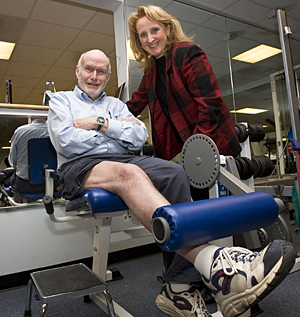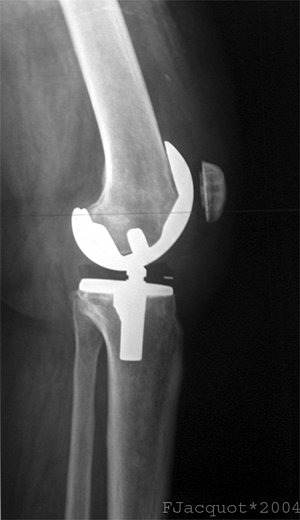Javascript is required to view this video

- Rozovsky wins prestigious NSF Early Career Award
- UD students meet alumni, experience 'closing bell' at NYSE
- Newark Police seek assistance in identifying suspects in robbery
- Rivlin says bipartisan budget action, stronger budget rules key to reversing debt
- Stink bugs shouldn't pose problem until late summer
- Gao to honor Placido Domingo in Washington performance
- Adopt-A-Highway project keeps Lewes road clean
- WVUD's Radiothon fundraiser runs April 1-10
- W.D. Snodgrass Symposium to honor Pulitzer winner
- New guide helps cancer patients manage symptoms
- UD in the News, March 25, 2011
- For the Record, March 25, 2011
- Public opinion expert discusses world views of U.S. in Global Agenda series
- Congressional delegation, dean laud Center for Community Research and Service program
- Center for Political Communication sets symposium on politics, entertainment
- Students work to raise funds, awareness of domestic violence
- Equestrian team wins regional championship in Western riding
- Markell, Harker stress importance of agriculture to Delaware's economy
- Carol A. Ammon MBA Case Competition winners announced
- Prof presents blood-clotting studies at Gordon Research Conference
- Sexual Assault Awareness Month events, programs announced
- Stay connected with Sea Grant, CEOE e-newsletter
- A message to UD regarding the tragedy in Japan
- More News >>
- March 31-May 14: REP stages Neil Simon's 'The Good Doctor'
- April 2: Newark plans annual 'wine and dine'
- April 5: Expert perspective on U.S. health care
- April 5: Comedian Ace Guillen to visit Scrounge
- April 6, May 4: School of Nursing sponsors research lecture series
- April 6-May 4: Confucius Institute presents Chinese Film Series on Wednesdays
- April 6: IPCC's Pachauri to discuss sustainable development in DENIN Dialogue Series
- April 7: 'WVUDstock' radiothon concert announced
- April 8: English Language Institute presents 'Arts in Translation'
- April 9: Green and Healthy Living Expo planned at The Bob
- April 9: Center for Political Communication to host Onion editor
- April 10: Alumni Easter Egg-stravaganza planned
- April 11: CDS session to focus on visual assistive technologies
- April 12: T.J. Stiles to speak at UDLA annual dinner
- April 15, 16: Annual UD push lawnmower tune-up scheduled
- April 15, 16: Master Players series presents iMusic 4, China Magpie
- April 15, 16: Delaware Symphony, UD chorus to perform Mahler work
- April 18: Former NFL Coach Bill Cowher featured in UD Speaks
- April 21-24: Sesame Street Live brings Elmo and friends to The Bob
- April 30: Save the date for Ag Day 2011 at UD
- April 30: Symposium to consider 'Frontiers at the Chemistry-Biology Interface'
- April 30-May 1: Relay for Life set at Delaware Field House
- May 4: Delaware Membrane Protein Symposium announced
- May 5: Northwestern University's Leon Keer to deliver Kerr lecture
- May 7: Women's volleyball team to host second annual Spring Fling
- Through May 3: SPPA announces speakers for 10th annual lecture series
- Through May 4: Global Agenda sees U.S. through others' eyes; World Bank president to speak
- Through May 4: 'Research on Race, Ethnicity, Culture' topic of series
- Through May 9: Black American Studies announces lecture series
- Through May 11: 'Challenges in Jewish Culture' lecture series announced
- Through May 11: Area Studies research featured in speaker series
- Through June 5: 'Andy Warhol: Behind the Camera' on view in Old College Gallery
- Through July 15: 'Bodyscapes' on view at Mechanical Hall Gallery
- More What's Happening >>
- UD calendar >>
- Middle States evaluation team on campus April 5
- Phipps named HR Liaison of the Quarter
- Senior wins iPad for participating in assessment study
- April 19: Procurement Services schedules information sessions
- UD Bookstore announces spring break hours
- HealthyU Wellness Program encourages employees to 'Step into Spring'
- April 8-29: Faculty roundtable series considers student engagement
- GRE is changing; learn more at April 15 info session
- April 30: UD Evening with Blue Rocks set for employees
- Morris Library to be open 24/7 during final exams
- More Campus FYI >>
8:07 a.m., Feb. 4, 2009----It may be uncomfortable at first, but doing exercises to strengthen your quadriceps after you've had knee replacement surgery due to osteoarthritis is critical to your recovery. In fact, it can boost the function of your new knee to nearly that of a healthy adult your age.
That's the finding of a University of Delaware study published in the February issue of Arthritis Care & Research.
The authors include Lynn Snyder-Mackler, Alumni Distinguished Professor of Physical Therapy at the University of Delaware, Stephanie Petterson, clinical faculty at Columbia University, Ryan Mizner, an assistant professor at Eastern Washington University, Jennifer Stevens, an assistant professor at the University of Colorado at Denver, and Drs. Leo Raisis, Alex Bodenstab, and William Newcomb of First State Orthopaedics in Newark, Del.
Petterson, Mizner and Stevens all received their doctorates in the Biomechanics and Movement Science (BIOMS) program at the University of Delaware.
“It sounds logical that exercises to strengthen your knee should be a component of your post-operative physical therapy after a total knee replacement, but it's not the convention at all,” says Snyder-Mackler.
“There are all of these old wives' tales that strength training is a detriment to the patient and that the new knee should be treated delicately,” Snyder-Mackler notes. “Our study demonstrates that intensive strength exercise as outpatient therapy is critical to begin three to four weeks after surgery.”
Quad strengthening key to TKA recovery
Nearly a half-million knee replacements, also known as total knee arthroplasties (TKAs), are performed every year in the United States to treat severe knee osteoarthritis, the loss of the cushiony cartilage padding the knee. The joint disease leaves its sufferers with persistent pain and limited function, resulting in an overall diminished quality of life.
While knee replacement alleviates the pain of osteoarthritis and improves function, patients exhibit impaired quadriceps strength and function for such activities as walking and climbing stairs, and the levels remain below those of healthy people of the same age.
In a randomized controlled trial at the University of Delaware's Physical Therapy Clinic conducted between 2000 and 2005, 200 patients who had undergone knee replacements were given six weeks of progressive strength training two or three times a week starting four weeks after surgery. Half of the group also received neuromuscular electrical stimulation (NMES).
Their function was compared to that of 41 patients who received conventional rehabilitation and home physical therapy. Quadriceps strength, knee range of motion, and gait were measured in such tests as timed up and go, stair climbing and a six-minute walk.
The group in the progressive strength-training program showed significant improvement in quadriceps strength and functional performance. They also demonstrated substantially greater quadriceps strength and functional performance after 12 months than the group that underwent conventional rehabilitation.
“This study clearly demonstrates the importance of surgeons encouraging their patients to be compliant with progressive quadriceps strengthening during their rehabilitation to enhance their clinical improvement and function post-total knee replacement,” notes Dr. Leo Raisis, a total joint surgeon at First State Orthopaedics and adjunct associate professor at the University of Delaware.
Raisis was one of the lead total joint surgeons on the study and also participated in the study's design and manuscript preparation. He has been in practice for over 20 years and currently serves as chairman of the Center for Advanced Joint Replacement of the Christiana Care Health System.
“Why undergo a $25,000 elective surgery and then not do as much as you can to get the most out of it and improve your quality of life?” Snyder-Mackler says. “Older people are incredibly motivated-they hurt after the surgery and they want to be better. They need to do this.”
Study participant benefits from experience
T. Fraser Russell, the Allan P. Colburn Professor of Chemical Engineering at the University of Delaware and chief engineer at UD's Institute of Energy Conversion, participated in the study in 2003 at the time of his first knee replacement.
In October 2008, he had his other knee replaced and says he sought out and again benefited from the quadriceps strength training program at the University's Physical Therapy Clinic, which is located on the ground floor of McKinly Laboratory.
“The stretching exercises are painful, but it's absolutely critical to do the physical therapy in the clinic and then do a set of exercises at home,” Russell says.
His most recent surgery was on Oct. 13, and by Dec. 13, he says, he was well on the way to recovery.
“My knee strength was already up to 1,000 Newtons, which is normal, over the holidays,” he says. “I'm an engineer, so I'm interested in that measure,” he explains.
Today, he can walk in a nearby park for a couple of hours at a time and go up and down stairs with ease.
“My knee is essentially restored to normal,” Russell says. “I'm really very pleased with what they do at the clinic,” he notes. “I'm gratefully in favor of and appreciate what they do.”
Article by Tracey Bryant
Photo by Ambre Alexander



